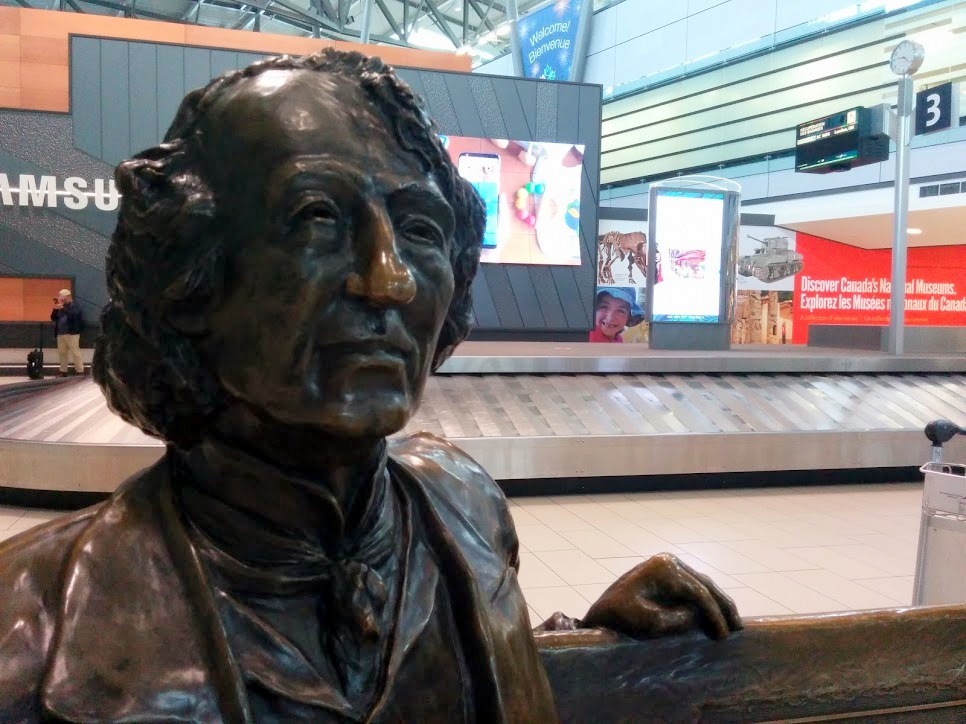Just as the Americans are dealing with what to do with statues of Confederate leaders such as General Robert E. Lee, Canadians have embarked on their own debate about stripping the name of Sir John A. Macdonald from schools and other buildings in Ontario. At its recent annual meeting, the Elementary Teachers Federation of Ontario passed a motion which described this country’s first prime minister as the “architect of genocide against Indigenous peoples.”
I do not agree with the union’s recommended action but respect their decision to engage in an important discussion. Until recently Macdonald was treated kindly by most historians, a trend toward hagiography that began with Donald Creighton’s biographies in the 1950s. Macdonald was portrayed as a lovable political rascal who achieved great things despite his heavy drinking and many other flaws.
Macdonald was a racist
Unfortunately, there is no doubt that Macdonald was a racist in his attitudes and actions toward Indigenous peoples. I was shocked several years ago to read in a book called Clearing the Plains that Macdonald, who was also the minister of Indian affairs, withheld food as a weapon to force starving First Nations people onto tiny reserves and out of the way of European settlers.
It was also Macdonald who sent Nicholas Flood Davin to investigate residential schools for Indigenous children in the United States. Macdonald then set up similar schools in Canada beginning in the 1880s. The objective, in his own words, was to remove children from their families, place them in residential schools and to “take the Indian out of the child.” The results of this cruel social engineering project were devastating as the Truth and Reconciliation Commission of Canada (TRC) has indicated.
Cultural genocide
These are harsh truths about Macdonald. Most other settlers in his day held Indigenous peoples in equal contempt and had no qualms about stealing their land — but Macdonald’s transgression is greater because he was the prime minister. Murray Sinclair, who was a judge and is now a Senator, was the lead commissioner for the TRC. He has used the term “genocide” to describe the intended results of residential schools, land seizures, forced relocations and other destructive tactics. Chief Justice Beverley McLachlin used the term “cultural genocide” and said: “The most glaring blemish on the Canadian historic record relates to our treatment of the First Nations that lived here at the time of colonization.”
Tread cautiously
Yet we should tread cautiously before expunging Macdonald’s name from buildings — a move which would almost certainly be followed by demands to have his statues removed in Kingston, on Parliament Hill and from locations such as the Ottawa airport, which also bears his name. The campaign paints Macdonald as a one-dimensional racist. However, he was able to overcome at least some commonplace prejudices of the day between Protestants and Catholics, and between Francophones and Anglophones. If there is nothing worthy about Macdonald, then perhaps there is nothing worth celebrating about the nation that he and others brought into being. I believe that, despite its flaws, there is much that is good and noble about Canada.
Smacks of revenge
Much of the momentum for reconsidering the relationship between Indigenous peoples and settler Canadians likely arises from the TRC report in 2015. Sinclair and his fellow commissioners made 94 calls to action that relate to reconciliation. They focus upon the need for an honest reappraisal of our history and a variety of concrete actions to be undertaken by governments, educational institutions, churches and individual Canadians.
Much of the emphasis in those recommendations is upon education. But nowhere does the TRC propose renaming buildings or removing statues. In fact, Sinclair has responded to the teachers’ request to do so by saying that it would be “counterproductive” and “almost smacks of revenge or smacks of acts of anger.”
Let us, as the TRC recommends, redesign school curricula to tell the truth about what has been done to Indigenous peoples in Canada, and to tell of the resilience of their societies. Let’s pressure the Trudeau government to adopt and implement the United Nations Declaration on the Rights of Indigenous Peoples. Let’s repudiate the Doctrine of Discovery, which held that Europeans could blithely claim as their own lands which had been occupied by Indigenous peoples since time immemorial. Let’s support treaties, land claims and the provision of equitable funding as it relates to education and social services for Indigenous children. Let’s not bother with names on buildings or the location of statues.
Image: Dennis Gruending
Please chip in to keep stories like these coming.




